What Is Asynchronous Communication?
Asynchronous communication is any work conversation where people do not need to respond at the same time. In this guide, you will learn a clear definition, how async compares to meetings and live chat, when to use each, and a practical playbook to reduce meeting load while improving outcomes across time zones like GMT+8.
Key Takeaways
- Async means you do not need everyone online at once. It relies on clear written updates, shared docs, and recorded context.
- Use async by default, reserve sync for complex, time-sensitive issues that need fast back-and-forth.
- Fewer meetings can raise productivity and lower stress when supported by documentation and response-time norms. (MIT Sloan Management Review, ACM Digital Library)
- A simple “async operating system” covers tools, templates, SLAs, and time-zone norms so teams in GMT+8 and beyond can move work forward while others sleep.
Imagine doing great work from anywhere and still growing your career. Browse Remotly’s fresh remote roles and let your next adventure begin.
What is asynchronous communication?
Definition. Asynchronous communication is the exchange of information that does not require participants to be present or respond simultaneously. In practice, it looks like writing a decision memo, leaving comments in a doc, updating an issue, or sharing a recorded walkthrough for others to review later. GitLab summarizes the mindset well: “At its core, asynchronous communication is documentation.” (The GitLab Handbook)
Why this matters now. Modern knowledge work is fragmented by notifications and meetings, making uninterrupted focus rare. Microsoft’s 2025 Work Trend Index Special Report analyzed Microsoft 365 telemetry and a survey of 31,000 workers across 31 markets. It found the average employee receives about 117 emails and 153 Teams messages daily, with meetings after 8 p.m. up 16%, and interruptions roughly every two minutes. (Source)
Asynchronous vs synchronous: what to use when
Direct answer
- Use async for updates, proposals, status reports, decisions with clear criteria, and reviews that benefit from thoughtful responses.
- Use synchronous meetings or calls for complex problems that need rapid iteration, sensitive topics that benefit from rich cues, or time-critical incidents.
Comparison table
| Criteria | Asynchronous Communication | Synchronous Communication |
|---|---|---|
| Decision speed | Slower start, faster end once written context exists | Fast start, risk of re-hashing or misremembering |
| Depth & focus | High, supports deep work | Variable, often fragmented |
| Time-zone inclusivity | Excellent, works across GMT+8 and all regions | Limited by overlap windows |
| Knowledge retention | Strong, everything documented | Weak without rigorous notes |
| Emotional nuance | Lower, must write clearly | Higher, voice and expression |
| Cost in person-hours | Lower over time | Higher, meeting hours compound |
| Best for | Proposals, reviews, updates, decisions | Strategy jams, sensitive topics, live incident response |
Benefits of async for global and hybrid teams
Fewer meetings, more output
A 2022 MIT Sloan Management Review study of 76 large companies (>1,000 employees each) that introduced 1–5 meeting-free days per week found productivity gains and lower stress. With two meeting-free days, productivity rose 71% and stress fell 43%. With three days, cooperation rose 55%. (MIT Sloan Management Review)
Lower stress from interruptions
Experimental HCI research shows interruptions increase stress, frustration, time pressure, and effort. In a CHI 2008 lab study with 48 participants, interrupted work was done faster but at the cost of higher workload and stress. Async practices limit interruption frequency and allow workers to batch responses. (ACM Digital Library)
Inclusion across time zones
Async removes the hurdle of time zones. GitLab, a fully remote company working in 65+ countries, frames async as the default so teammates can contribute while others sleep. That increases access, belonging, and fairness for colleagues in regions like Singapore (GMT+8). (The GitLab Handbook)
Local note for Singapore
Microsoft’s 2023 Singapore Work Trend Index found 69% of employees in Singapore say they lack time and energy to get work done, pointing to “digital debt.” Async norms reduce unnecessary pings and preserve focus time. (Source)
Risks and how to mitigate them
- Delayed decisions. Mitigation: decision owner, due date, and a default option if no objections by a set time.
- Tone misreads. Mitigation: write with context; use headings, bullets, and examples; add a short loom-style walkthrough when stakes are high.
- Over-documentation. Mitigation: use templates with strict sections and word limits.
- Fragmentation across tools. Mitigation: a single source of truth with link-back norms.
Expert view: “At its core, asynchronous communication is documentation.” Use a single system of record and assume recipients may be offline, even asleep. - GitLab Handbook. (The GitLab Handbook)
Your async operating system: a practical playbook
A. Norms and SLAs
- Response-time SLA: e.g., 24 business hours for comments, 4 business hours for blockers, use “urgent” flag for incidents.
- Time-zone etiquette: publish core availability windows and rotate any necessary live sessions to include GMT+8 regularly.
- Decision hygiene: every proposal names a DRI, decision date, and the decision record link.
B. Templates to standardize quality
- One-page decision memo (Context, Options, Criteria, Recommendation, Risks, Decision).
- Async status update (What changed, Risks, Next step, Help needed).
- Design or PRD review (Problem, Requirements, Mock or spec, Questions, Due date).
Imagine doing great work from anywhere and still growing your career. Browse Remotly’s fresh remote roles and let your next adventure begin.
C. Cadence without meetings
- Weekly written check-ins due by local Friday 15:00.
- Monthly “async all-hands” recorded update plus Q&A doc.
- Quarterly roadmap review in a shared deck with comments window open for five business days.
D. When to go live
- If a proposal is blocked after two async cycles.
- If the topic is emotionally charged or ambiguous.
- If there is an incident or regulatory deadline.
6) Examples, tools, and norms
- Write once, link many. “If it is not in the doc or the issue, it does not exist.” Make decisions discoverable. (The GitLab Handbook)
- Record context, not just files. A 3–5 minute narrated walkthrough prevents long comment threads.
- Batch notifications. Turn on scheduled send and quiet hours to reduce the “infinite workday.” Microsoft’s 2025 data shows many workers now check email before 6 a.m. and again late at night, which erodes boundaries. Async norms counter this. (Source)
Conclusion
Async is not anti-meeting. It is pro-clarity. When you document decisions, give people time to think, and respect time zones, work feels calmer and output gets better.
Start with small steps: two meeting-free days, a one-page decision memo, and a response-time SLA. Then let the results speak for themselves.
Imagine doing great work from anywhere and still growing your career. Browse Remotly’s fresh remote roles and let your next adventure begin.
Methodology
This article combines primary research and official guidance with practitioner handbooks. Statistics include: Microsoft’s Work Trend Index 2025 (analysis of Microsoft 365 telemetry plus a survey of 31,000 workers across 31 markets), MIT Sloan Management Review 2022 study of 76 large companies, and CHI 2008 lab research with 48 participants. We prioritized primary sources and included year and sample sizes for each stat. (Source, MIT Sloan Management Review, ACM Digital Library)
FAQ
Is asynchronous communication the same as “no meetings”?
No. Async reduces routine meetings, but you should still use live sessions for complex, sensitive, or urgent issues.
How fast should people reply in an async culture?
Set an SLA, such as within one business day for comments, and 4 business hours for blockers. Publish exceptions for holidays and regional observances.
Can async work for customer-facing teams?
Yes. Use shared queues, knowledge bases, and clear escalation paths. Reserve sync for high-severity cases.
What about creativity and bonding?
Host optional social sync sessions and occasional workshops. Async should free up time for the few live moments that matter.
How do we start without disrupting everything?
Pilot with one team for 4–6 weeks. Introduce templates, define SLAs, set two meeting-free days, then measure meeting hours and lead times before and after.
Cited statistics (with sources)
- 117 emails + 153 messages per day; +16% evening meetings. Microsoft Work Trend Index Special Report, 2025. Survey of 31,000 workers across 31 markets and Microsoft 365 telemetry. (Source)
- Productivity +71%, stress −43% with two meeting-free days. MIT Sloan Management Review, 2022. Study of 76 companies with >1,000 employees. (MIT Sloan Management Review)
- Interruptions raise stress and workload. CHI 2008 lab study, 48 participants. “The cost of interrupted work: More speed and stress.” (ACM Digital Library)
- Singapore “digital debt”. 2023 Microsoft Work Trend Index Singapore snapshot, finding 69% of employees lack time and energy for work. (Source)
Quick Reference Pack: TLDR, Stats, Table, FAQ
TL;DR
- Async = no simultaneous response required.
- Default to async; escalate to sync for complex, sensitive, or urgent topics.
- Start with templates, SLAs, and two meeting-free days.
Statistics
- Average worker: 117 emails + 153 messages daily; +16% evening meetings (Microsoft WTI 2025, n=31,000 across 31 markets + telemetry). (Source)
- Productivity +71% and stress −43% with two meeting-free days (MIT Sloan, 2022, 76 companies). (MIT Sloan Management Review)
- Interruptions increase stress and workload in lab study (n=48, CHI 2008). (ACM Digital Library)
Comparison table (reuse)
| Criterion | Async | Sync |
|---|---|---|
| Inclusivity across time zones | ✅ | ⚠️ |
| Knowledge retention | ✅ | ⚠️ |
| Decision latency | ⚠️ | ✅ |
| Emotional nuance | ⚠️ | ✅ |
FAQ (short)
- What is async? Non-simultaneous communication.
- When to meet live? Complex, sensitive, urgent.
- How fast to reply? Follow SLAs, e.g., 24 business hours.
Methodology notes
- We prioritized primary research and official sources. We included publication year and sample sizes. Microsoft WTI combines telemetry with a global worker survey; MIT Sloan analyzed large enterprises; CHI 2008 used a controlled lab experiment. (Source, MIT Sloan Management Review, ACM Digital Library)
Sources
- Microsoft. “Work Trend Index Special Report: Breaking down the infinite workday,” 2025. Global survey of 31,000 knowledge workers plus Microsoft 365 telemetry. (Source)
- MIT Sloan Management Review. “The Surprising Impact of Meeting-Free Days,” 2022. Study of 76 large companies. (MIT Sloan Management Review)
- Mark, G., Gudith, D., Klocke, U. “The cost of interrupted work: More speed and stress,” CHI 2008. 48 participants. (ACM Digital Library)
- GitLab Handbook. “How to embrace asynchronous communication for remote work,” accessed 03 September 2025. (The GitLab Handbook)



